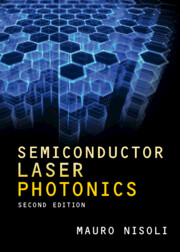3 results
3 - Long-Wavelength Mid-Infrared Quantum Cascade Lasers
- from Part I - Bandstructure Engineering, Modeling and State-of-the-Art QCLs
-
- Book:
- Mid-Infrared and Terahertz Quantum Cascade Lasers
- Published online:
- 25 August 2023
- Print publication:
- 14 September 2023, pp 102-137
-
- Chapter
- Export citation

Semiconductor Laser Photonics
-
- Published online:
- 10 November 2022
- Print publication:
- 24 November 2022
A review of applications of principles of quantum physics in oncology: do quantum physics principles have any role in oncology research and applications?
-
- Journal:
- Journal of Radiotherapy in Practice / Volume 18 / Issue 4 / December 2019
- Published online by Cambridge University Press:
- 30 April 2019, pp. 383-394
-
- Article
- Export citation

